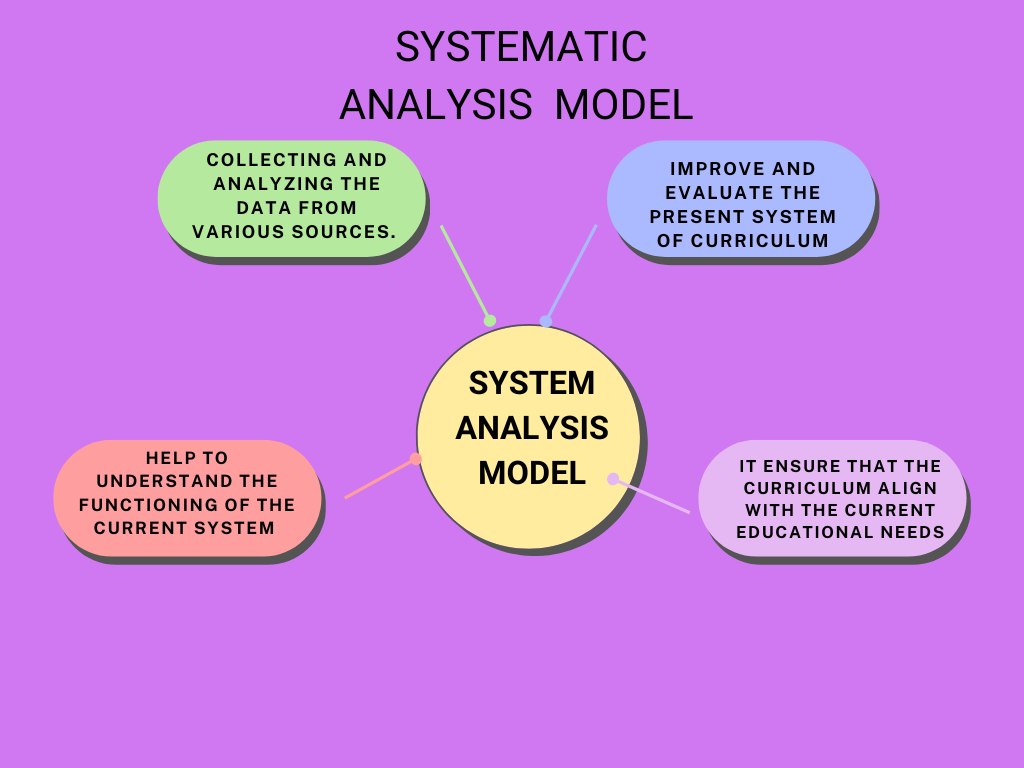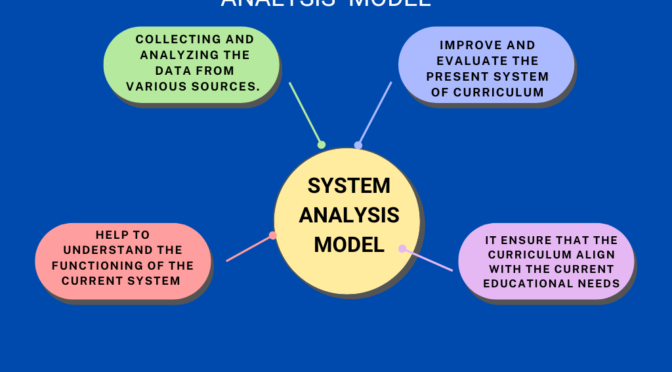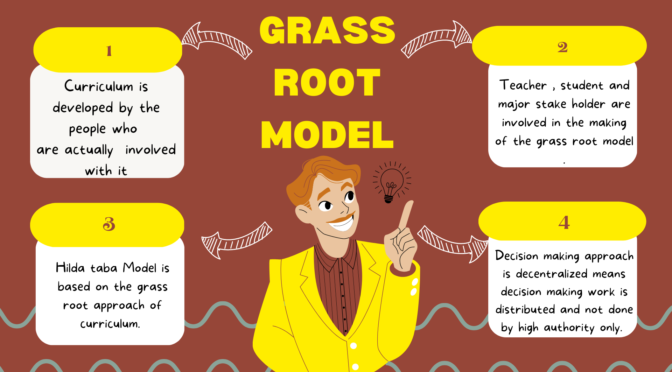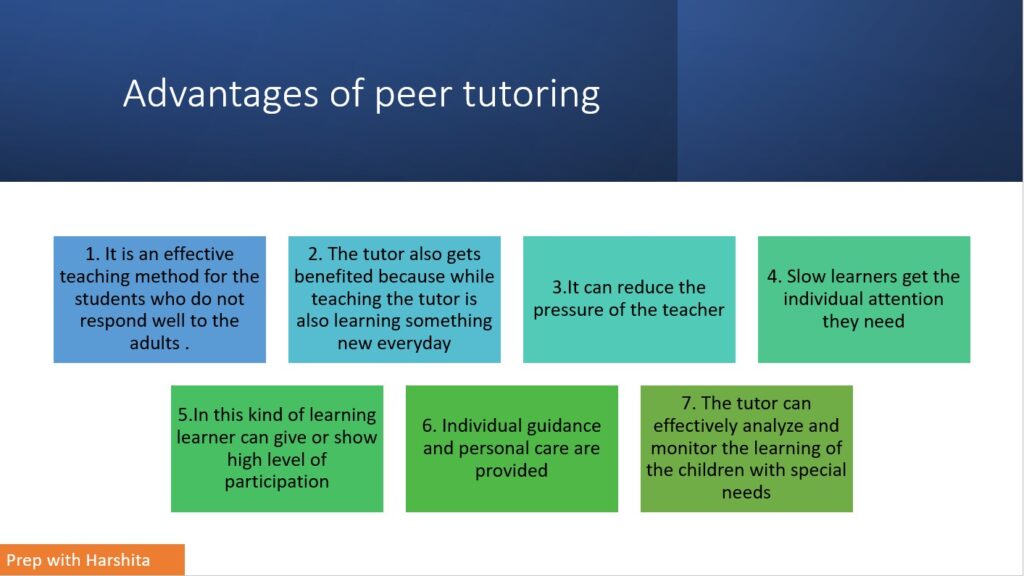System Analysis Model is used to improve and evaluate the present system of curriculum. A curriculum system analysis model is a framework used to evaluate and improve the curriculum development process in educational institutions.
It examines the various components of the curriculum, such as goals and objectives, content, instructional materials, assessment, and evaluation, which help to identify strengths and weaknesses and suggest improvements in the current system of curriculum.
The aim of this model is to ensure that the curriculum aligns with the needs of students and supports their learning and development in the right direction. The analysis process may involve collecting and analyzing data from various sources, such as teachers, students, and experts, and using it to make decisions about curriculum design and implementation.
The features of a system analysis model for curriculum development include:
- Assessment of goals and objectives- It ensure if the goals and objectives are with respect to the need of the students.
- Content analysis: The model examines the relevance and accuracy of the content covered in the curriculum, and identifies any gaps.
- Instructional materials review: The model evaluates the quality and effectiveness of instructional materials, such as textbooks and technology, used in the curriculum.
- Assessment and evaluation: The model assesses the validity and reliability of the assessment and evaluation methods used to measure student learning and progress.
- Stakeholder engagement: The model encourages active involvement of key stakeholders, such as teachers, students, parents, and experts, in the curriculum development process.
- Data-driven decision making: The model uses data collected from various sources to inform decisions about curriculum design and implementation.
- Continuous improvement: The model provides a framework for ongoing evaluation and improvement of the curriculum, to ensure that it remains relevant and effective with changing needs and expectations.






